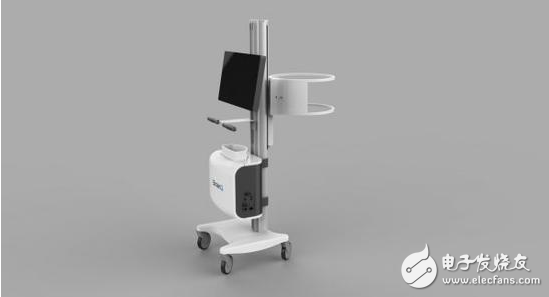According to reports, the brain control interface is still a new technology in the early stage of development, we are not fully prepared to fully integrate the human brain and the computer. But at the same time, a company hopes to help patients with stroke and spinal cord injury by non-surgical implantation of an electroencephalogram (EEG) machine.
The revolutionary technology being developed by Neuralink and other brain-computer interface (BCI) companies created by American continuous entrepreneur Elon Musk is likely to help improve human intelligence, memory and communication skills in the future. Although the prospects of this technology are very attractive in practice, in fact, the thought of implanting the chip into the human brain is enough to hesitate the most fanatical sci-fi fans.
Israeli-based neuroscience startup BrainQ is taking a less invasive approach that combines the human brain with technology. Instead of using implants, BrainQ uses a non-surgically implanted EEG that records the brain's electronic activity. EEG has been used by other paralyzed patients, and BrainQ hopes that their technology will achieve similar goals and improve the lives of patients with stroke and spinal cord injuries.

Figure: Fusing technology with the human brain can produce incredible results
However, this neurotech company faces considerable obstacles that need to be removed before their technology is used for medical purposes. First, this technology requires successful completion of human clinical trials. It then needs to be approved by the Food and Drug Administration (FDA) for commercial use in the United States. Ultimately, the most difficult challenge for BrainQ will be to continue to compete with other companies trying to create similar EEG-based technologies.
While companies like NeuroLuTIons and NeuroPace will technically become competitors to BrainQ, the latter appears to be a leader in the application of stroke and spinal cord injury patients. The company hopes the technology will be available in the US market by 2020. After that, they will continue to work to separate BrainQ from other companies by developing a broader disease application.
Brains spokesperson Assaf Lifshitz said the company hopes to use the technology to collect data, improve symptoms in Alzheimer's patients, and help treat several childhood diseases.
The timeline set by BrainQ may be reasonable because it relies on less invasive techniques (as opposed to brain implants), which may be much easier to obtain approval from the Food and Drug Administration than other BCI technologies. . With the introduction of this technology, BrainQ hopes to collect more in-depth and extensive data on human brain electronic activities. In the future, these data may help to make a more accurate assessment of the patient's condition, thus helping them to get more effective treatment.
Horizontal Capacitive Touch Display
capacitive Touch Screen products,advertising display screens,query all-in-one monitors,widely used in our life.The Flat Panel Displays LCD advertising message information Activpanel release system is prepared by the company`s store owners in advance. Digital Signage Media Player digital signage for chromecast,digital signage for schools,digital signage media player,The Digital Signage Displays audience does not need to increase personal investment and consumption costs, but only needs to "focus on" resources. Flat Panel Displays media player for digital signage This is easy to accept for everyone. At this point, the popularization of advertising words on LCD screens is a kind of work that is profitable and has the characteristics of Interactive Flat Panel social development and Digital Signage Displays public welfare.
capacitive touch display screen,20 points capacitive touch technology, widely used in different industries
Jumei Video(Shenzhen)Co.,Ltd , https://www.jmsxdisplay.com